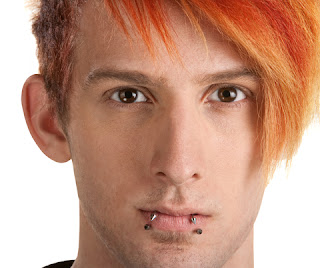By Jessica Pierson Russo
 Young people try on identities like hats. They experiment with ways of dressing and talking, even trying out beliefs and values. This is completely normal. Yet the many dimensions of identity—race, ethnicity, gender, sexual orientation, etc.—can make forming an integrated identity complex.
Young people try on identities like hats. They experiment with ways of dressing and talking, even trying out beliefs and values. This is completely normal. Yet the many dimensions of identity—race, ethnicity, gender, sexual orientation, etc.—can make forming an integrated identity complex.
Nagaoka defines an "integrated identity" as "a sense of internal consistency of who one is -- across time, place, and social realms." Having an integrated identity "provides a stable base from which a young person can act in the world."
What role can youth programs play in helping young people form an integrated identity? There are two important ingredients: Developmental experiences and developmental relationships.
Schools don't always offer the best setting for these experiences. But nonformal educational settings, such as youth programs, can.
Developmental experiences can differ across race and class, but developmental relationships can help fill these gaps. “Children who grow up in more affluent families do not necessarily have ‘better’ developmental experiences, just more of them.” The number of experiences that help youth learn cultural navigation skills also differs across race and class. Youth from dominant cultures can avoid stepping into unfamiliar contexts if they wish, without sacrificing their chance for opportunity. But youth from non-dominant cultures have no choice but to learn to navigate dominant cultures if they want to get ahead in life. Developmental relationships can help all youth process these hard lessons while supporting healthy identity development.
What do you do in your youth program to support youth identity development?
You are welcome to comment on this blog post. We encourage civil discourse, including spirited disagreement. We will delete comments that contain profanity, pornography or hate speech--any remarks that attack or demean people because of their sex, race, ethnic group, etc.--as well as spam.
 Young people try on identities like hats. They experiment with ways of dressing and talking, even trying out beliefs and values. This is completely normal. Yet the many dimensions of identity—race, ethnicity, gender, sexual orientation, etc.—can make forming an integrated identity complex.
Young people try on identities like hats. They experiment with ways of dressing and talking, even trying out beliefs and values. This is completely normal. Yet the many dimensions of identity—race, ethnicity, gender, sexual orientation, etc.—can make forming an integrated identity complex.Nagaoka defines an "integrated identity" as "a sense of internal consistency of who one is -- across time, place, and social realms." Having an integrated identity "provides a stable base from which a young person can act in the world."
What role can youth programs play in helping young people form an integrated identity? There are two important ingredients: Developmental experiences and developmental relationships.
Developmental experiences
Experiences that support a young person’s developmental needs are those that allow youth to encounter new things, tinker with them, practice new skills, and make their own choices.Encountering
Provide as much opportunity as you can for youth to discover things that they might not encounter otherwise. Doing so will help them develop a curiosity and awareness of themselves, others, and the possibilities in the world.Tinkering
Allow youth space to mess around with what they're encountering with as few limits (beyond safety concerns) as possible. This allows them to naturally test out what’s possible and what they are capable of -- without fear of failure.Practicing
Offer youth chances to to develop competency by building on what they’re learning. Deliberate practice develops confidence, and motivation to learn.Choosing
Offer choices as much as you can. It will enable youth to feel their contribution to the learning and make the experience more meaningful and relevant.Schools don't always offer the best setting for these experiences. But nonformal educational settings, such as youth programs, can.
Developmental relationships
Experiences are important for development, but for youth to find meaning in them and understand themselves better, they need strong and supportive relationships with adults and peers. Youth programs should foster youth-adult-peer interaction that supports developmental relationships.Developmental experiences can differ across race and class, but developmental relationships can help fill these gaps. “Children who grow up in more affluent families do not necessarily have ‘better’ developmental experiences, just more of them.” The number of experiences that help youth learn cultural navigation skills also differs across race and class. Youth from dominant cultures can avoid stepping into unfamiliar contexts if they wish, without sacrificing their chance for opportunity. But youth from non-dominant cultures have no choice but to learn to navigate dominant cultures if they want to get ahead in life. Developmental relationships can help all youth process these hard lessons while supporting healthy identity development.
Identity formation
As Nagaoka points out, “A successful transition into young adulthood relies on a firm footing of the foundational components:- An awareness of self and others to support self regulation and planning.
- Knowledge and skills about self and the world.
- Mindsets that project a self-belief and support one’s agency to achieve goals.
- The values a person holds for self and society.
- The identity choices one makes, hopefully based on a broad sampling of possibilities.
What do you do in your youth program to support youth identity development?
You are welcome to comment on this blog post. We encourage civil discourse, including spirited disagreement. We will delete comments that contain profanity, pornography or hate speech--any remarks that attack or demean people because of their sex, race, ethnic group, etc.--as well as spam.
Comments
Post a Comment